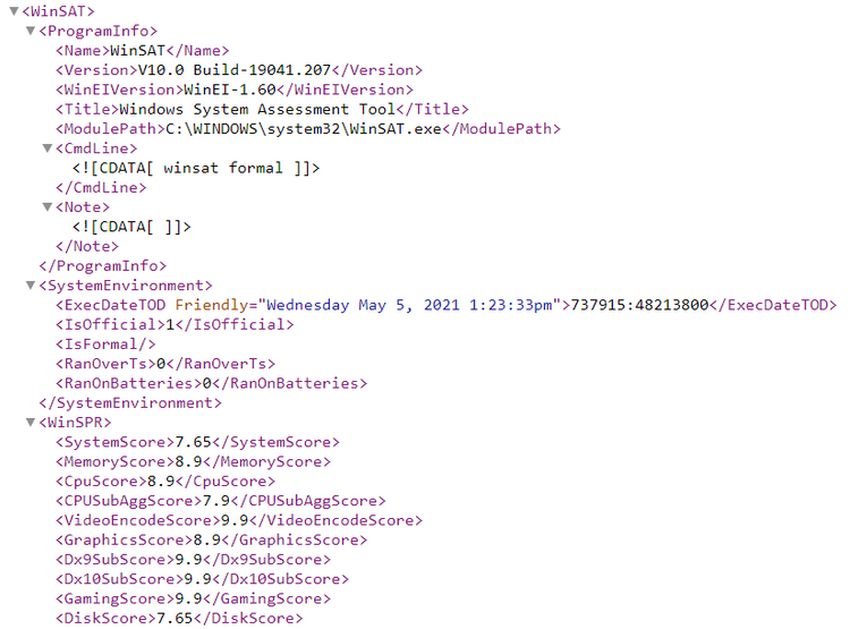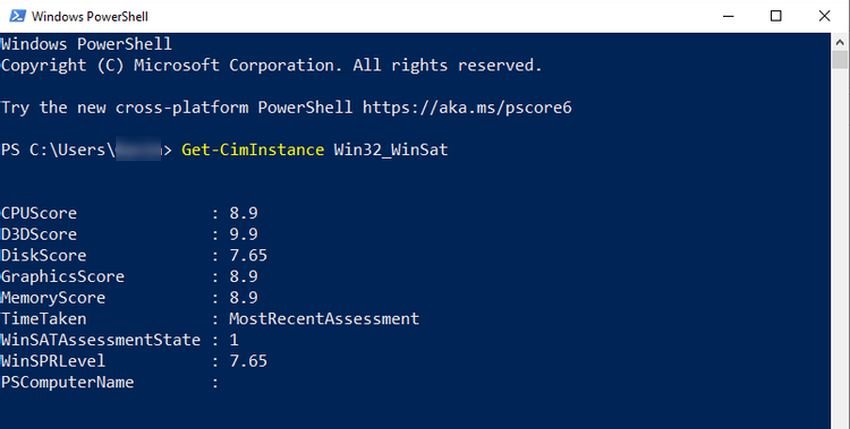Remember the Windows Experience Index? The Windows Experience Index was a quick way for Windows users to understand the overall performance of their computer and any immediate difficulties.

Microsoft has removed graphics version of the Windows Experience Index (WEI) in Windows 8.1. But the underlying tool, the Windows System Assessment Tool, still lives on. You can easily access your machine's old performance scores.
Here's how to test the Windows Experience Index in Windows 10.
Step 1: Run WinSAT to create the Windows Experience Index
The Windows System Assessment Tool (WinSAT) remains hidden in Windows 10. You can use WinSAT to create a Windows experience index for the processor, graphics card, speed memory and much more.
To do this type open a command prompt as an administrator and enter the following command: winsat formal

If you do not know how to open a command prompt, type the word "Command Prompt" in the search, in the results right click on "Command Prompt - Application" and select "Run with administrator privileges".
Step 2: Wait for the process to complete. When done, you can find the XML file in C: \ Windows \ Performance \ WinSAT \ DataStore.
Browse a set of files that contain the date you performed the test. Open the XML file that looks like "[test date] Formal.Assessment (Recent) .WinSAT.xml".
When prompted, select your web browser to view the XML file. Your browser will do data XML readable. The Windows Experience Index is located near the top of the file.

Alternatively you can use Windows PowerShell to read the results. It works about the same and gives you a much more readable read.
Type powerhell in the Start menu search bar, right-click Windows PowerShell, and select Run as administrator. When PowerShell opens, enter the following command: Get-CimInstance Win32_WinSat

The overall Windows experience index is listed with WinSPRLevel.
In Internet there are other ways to view the Windows 10 Experience Index, third-party ones like Winaero WEI or even completely standalone solutions that create their own benchmarks and present them, like SiSoftware Sandra or UserBenchmark.
Is the Windows Experience Index useful and reliable?
For some reason Microsoft does not advertise the Windows 10 Experience Index. Also, Microsoft has removed the Windows Experience Index from the Microsoft game board. As you understand, you will not find your score unless you do all of the above.
The Windows Experience Index was a commercial failure as it is essentially aimed at users who do not have much experience with computer hardware. In addition, in Windows 7 and Vista it was registered in the properties of the system, where no novice user had a reason to go there. It was not very useful anyway, even for the users who discovered it.





